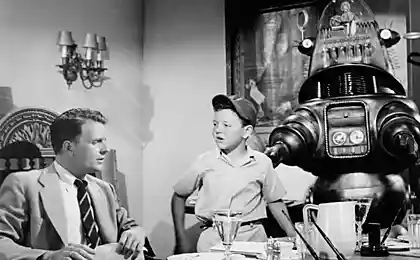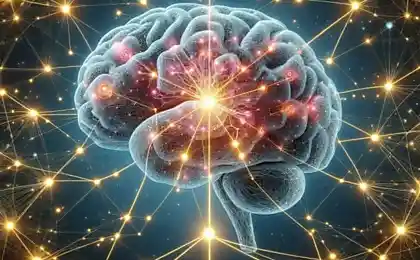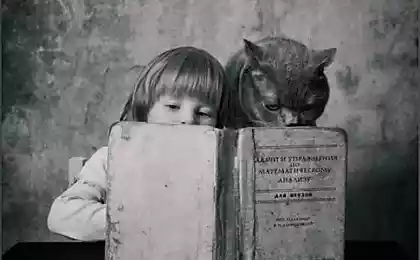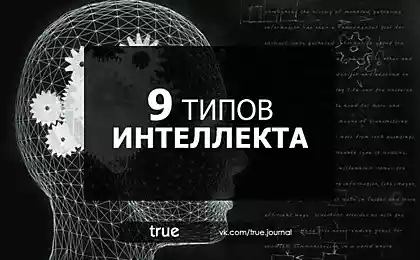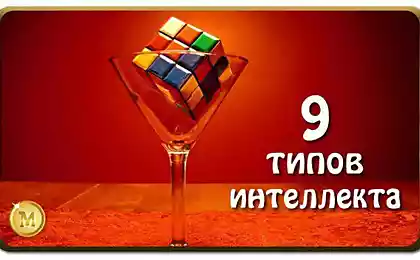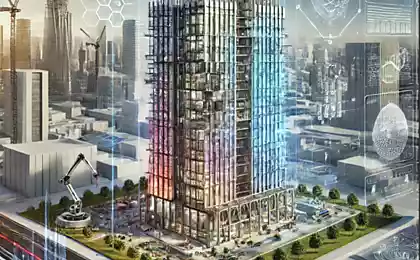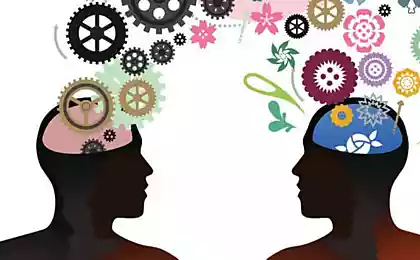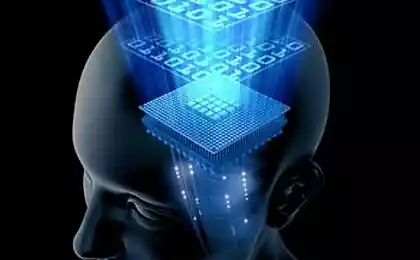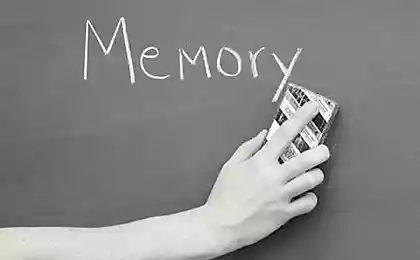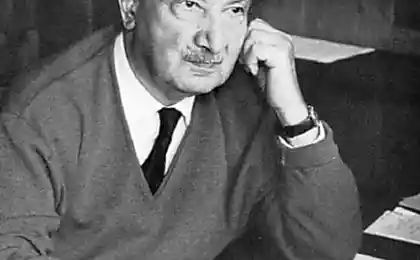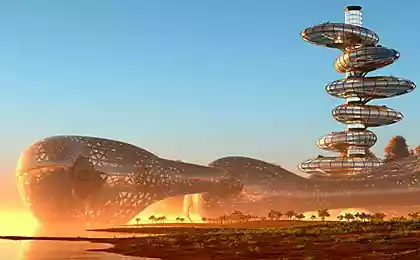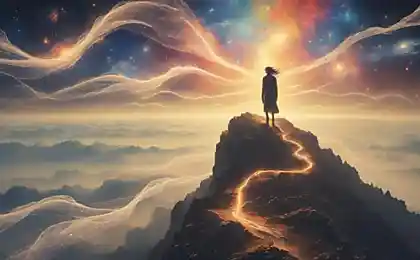2313
Logic thinking. Part 16. Batch Presentation

This series of articles describes the wave model of the brain, is very different from traditional models. It is highly recommended for those who just joined, start reading from the first part of the .
Information, which the brain uses, should, on the one hand adequately describe what is happening on the other hand, should be stored so as to allow the execution of an operation required by the brain. In principle, the format of the description of information and its processing algorithms - things are closely linked. The first largely determines the second. Therefore, speaking about how the data can be organized, stored by the brain, we want it or not, largely determines the follow-up system of thought processes. Since talking about the principles of thinking we will later, but now we will focus only on how to ensure the completeness of the description of the current and subsequent storage. In this case, meaning that if, before reaching thinking, it turns out that the chosen data format came under the required algorithms, it means that we are lucky and we went on the right path.
To understand what format description is used brain trace the sequence of visual perception. Looking at the picture, we are "scan" of his rapid eye movements, called saccades (drawing on KDPV). Each of them is placed in the center of one of the fragments of the picture. On areas of the visual cortex there are descriptions that correspond to what we see at this point in the center of what he sees and what peripherals displacement as a result of just done saccades. Each of the next saccade generates a new picture. These descriptions follow each other one by one.
So, looking at the face, we first, for example, can clearly see and recognize one eye, one that aims to look. The remaining elements of the face that is directed onto the periphery of the relative - the nose, mouth and so on, we find less, but the same is a high probability. After each saccade central fragment varies, but a common set of recognized elements remains unchanged.
In principle, each of these individual descriptions arising between saccades, enough to say that the person in front of us, and even find out who it belongs to. But every single description reliably says only that object, which for him is in the direction of gaze. The remaining objects are determined enough about.
If we want to get a more complete and detailed picture of the face, then this will suit the set of all descriptions that occur during scanning. It will be important not just a description of what these objects recognized, but also information about the concomitant shift in sight. And here we come to a very important point. What is the summary description, which should produce the visual analyzer? Just a picture of the activity of a number of concepts? This corresponds to only that part of the description of what we're seeing right now. But what about the rest? It turns out that the correct, do not lose information, a description - a package of consecutive simpler descriptions. Wherein each of the layers of the temporary package describes only some of the information obtained as a complete description of how their collection. This is true provided that all the descriptions in the package corresponds to one event, that is, get up to the global shift our attention.
If you take a snapshot of the activity of the cerebral cortex, the description of what is happening can be compared with a list of active concepts at each of its areas. But such a description has a significant drawback. Suppose we want to describe the still life depicted in the figure below.

We can do it like this:
- Vase slightly right of center;
- A bouquet in a vase;
- Towel right of the vase;
- A white flower on a towel;
- A bowl of raspberries on the left;
- Raspberries on the sheet to the left of the bowl;
- Three front of a bowl of raspberries;
- Raspberry right of the vase.
This package presentation is very well correlated with the arguments on the scope of human attention. Psychologists studying the properties of attention, found that there is a limit to the number of sites where people can simultaneously concentrate. Typically, this limit does not exceed seven objects. The first volume measurement using a mechanical attention tachistoscope did the founder of experimental psychology Wilhelm Wundt.
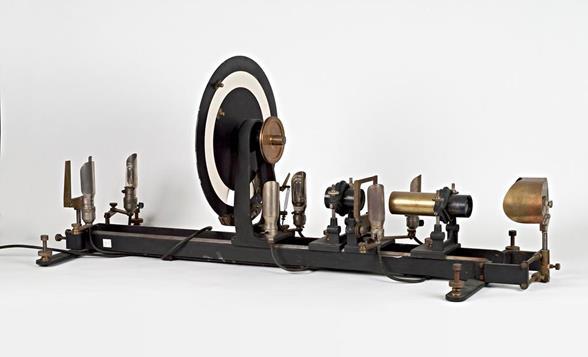
Tahitoskop - a device that allows you to produce consistent visual stimuli i>
Estimate the amount of attention is very simple. Look at the previous still life and try to count how many individual elements, you can not, do not remember, that's different, but keep in mind simultaneously. Or take the seven-digit telephone number, such as 1145618 and try "to keep" him in the head. Most likely, that he was not gone, you'll have to repeat it looped himself. If the digits in the number is more than seven, that is a good chance that keep them all in memory will fail. The maximum number of simultaneously perceived object still life or digits gives an estimate of the volume of your attention.
Our assumption of a packetized information in the cortex of the brain allows us to associate each of the objects held in the attention to one of the layers of the information package.
If you submit a crust consisting of a small number of concepts, the ability to formulate very simple thoughts about the two objects «A» and «B», the packet corresponding to the thought: "A red object lying on a blue object B», will appear as shown in Figure below.

Example information package i>
Coding of complex descriptions
Let's return to the memory and try to organize as to what types of information, and therefore the types of descriptions can deal with our brains.
The first type - is a simple description of which corresponds to an instantaneous picture of the activity of the cortex. It's a combination of those concepts that are detected by the brain right now.
The second type - a suite of simple descriptions corresponding to one event, one thought. The package is irrelevant sequence descriptions. Rearrange layers of the package does not change the general meaning of the utterance. Remembering package - is the restoration of a series of consecutive simple descriptions.
The third type - a positional description. In this description, the coupling of one object to another, located them in a certain system of relations. For example, a version of such a description - a spatial description. When we do not just fix its position in space, and link it with the location of certain descriptions of other objects.
The fourth type - a procedural description. Such a description, which is important sequence of changes in the images and the attendant intervals. For example, the perception of speech sounds determined by the sequence, wherein the ratio of intervals forms intonation, which is highly dependent on the general meaning of the phrase heard. Recollection of the procedure - a reproduction of the corresponding sequence of images.
And the fifth type - a chronological description. Fixation on long stretches of time in what order and what time intervals occurred or that event. The opportunity to recall the chronological memory - it's not all play at once belonging to a chronology, and the ability to go from one description to another, the associated general time sequence.
It is easy to notice that many describe one way or another tied to time. Batch description - it is a series of consecutive images. Procedural description considers the sequence of events. Chronological description requires taking into account the positioning of events in time.
Such dependence descriptions from time gave rise to the appearance of the corresponding models. The most famous of them - a concept promoted by Jeff Hawkins hierarchical temporal memory (HTM) (Hawkins, 2011). He and his colleagues based on the fact that the temporal change of events - the only thing that makes it possible to relate the individual information images. From this it is concluded that the basic information element should not operate cortex with static images, with a time sequence. The concept HTM cell storage - is deployed in time sequence of signals. Recognition - the definition of coincidence of the two sequences. With particular emphasis on the ability of HTM to the prediction. Once a neuron learns the beginning of the sequence known to him, he becomes able to predict remembered my experience they continued. Description of the current picture in HTM - is the activity of those neurons that responded to the change of the current events.
The complexity of this approach are obvious enough. First, the requirement of compliance time scales. Slight acceleration or delay in receipt of the data could disrupt recognition algorithm. Second, the need to translate all static images in a time sequence before the bark can operate with them. And so forth.
In our model system identifiers gives us a versatile tool that is equally well suited to describe all the possible types of memory. The basic idea is simple - each simple description is a composite ID, containing everything you need to specify the entire set as associative and temporal relationships.
The figure below shows the schematic of such a simple description. A simple description - this wave carrying a few sets of identifiers of different types. The main content is encoded by a set of identifiers of concepts describing the essence of what is happening. Layer identifier marks the main content, separating it from the rest of simple descriptions. Packet identifier combines multiple layers belonging to the same complex descriptions. IDs of place, time and sequence to create a system of appropriate links between complex descriptions.
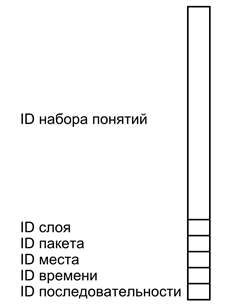
The format of a simple description of i>
Take the previous example and let the waves identifiers corresponding to the concepts used (concepts), as C1 ... C7 (figure below).
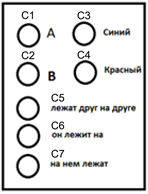
The terms used to describe i>
Then a description of what "red object A is a blue object B» will appear as shown below.
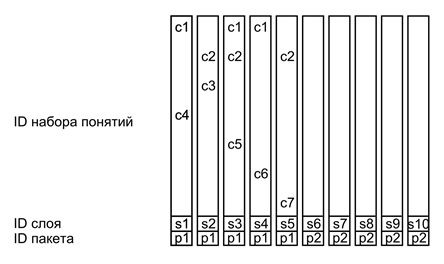
Example complex description i>
In this example, each of the layers of the pouch is a simple description to an identifier of the layer. All layers have a total package packet identifier p1. When does one complex description, etc., following it is different from a packet identifier p2 (second description of the concepts are not shown).
To this design was workable, the brain requires a rather complex system of creating identifiers that form packages. And for each of the cortical areas may require a different set of identifiers is relevant for her.
For example, take a sequence of visual perception. Abrupt micromotion eyes, called microsaccades, cause the eye to scan a small portion of the image that falls on the center of the retina. All images that are obtained in the course of such a scan, may be expected to join the common identifier. Micromotions eye controls the upper bumps quadrigemina. It can be assumed that they encode such an identifier. After several microsaccades is a strong jump-called saccade (above the figure with the head of Nefertiti is shown saccade). Each saccade cause change ID microsaccades.
We can assume that microsaccades are fundamental to the primary visual cortex. Common identifier reported crust that series of consecutive describe the same object, but in its different positions on the retina that allows you to combine them into a single description and implement invariant to the position on the retina recognition.
Longer event - a series of saccades. Since the series refers to the scrutiny of a single picture, you get the same description can be linked together another common identifier - the identifier of saccades. But this identity is not essential for the primary and secondary and deeper levels of the visual cortex, where the post-processing of information. Identifier that tells the crust, all that we see during a series of saccades - are one and the same picture, allows to correlate the same images that are visible in different places of the retina.
Change the identifier of saccades should occur when the picture changes significantly to examine. For example, with a strong turn of the head, shifting attention, change of plans or a scene in a movie. Shifting attention can be encoded elements of the limbic system of the brain and spread to many, it is tied to, cortical areas. At the same time in the present descriptions identifiers hippocampus encode spatial-temporal descriptions of events. In short, the system identifiers that define the package, can be quite complicated, and by the characteristics of the information which has to deal with each specific area of the cortex.
Using IDs is easy to organize a lock sequence of events. For example, if you take an identifier, consisting of two pieces, then alternately changing one of them, you can get an associative relatedness neighboring descriptions (see Figure below).
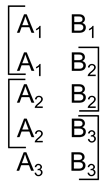
The coding sequence i>
Each such element will contain the identifier of the previous and subsequent identifier. Remembering a time sequence of images with such identifiers for each image we will be able to find his two neighbors on the timeline. It is easy to complicate the identifier can encode not only the overall coherence, but also the direction of the flow of time.
It should be noted that in our model, every memory has a rich system of identifiers. This allows access to the memory through a variety of very different associations. You can remember anything, based on the coincidence washed descriptions. With its associated information can picture the place or the time of the events described. You can play a sequence of images belonging to the same event. Easy to see that such access to memories has much in common with approaches that are used to create traditional relational databases.
References
Previous parts:
Part 1. Neuron
Part 2. Factors
Part 3: Perceptron, convolutional network
Part 4. Background activity
Part 5. The brain waves
Part 6. System projections
Part 7: Human-Computer Interface
Part 8: Allocation of factors in the wave networks
Part 9 patterns of neural detectors. Rear projection
Part 10: Spatial self-organization
Part 11. Dynamic neural networks. Associativity
Part 12. Traces of Memory
Part 13. Associative Memory
Part 14. The hippocampus
Part 15. Consolidation memory
Alex Redozubov (2014)
Polish media: The State Duma of the Russian Federation sent an official letter to the Polish Foreign Ministry with a proposal to divide Ukraine
House Budget off-budget format







